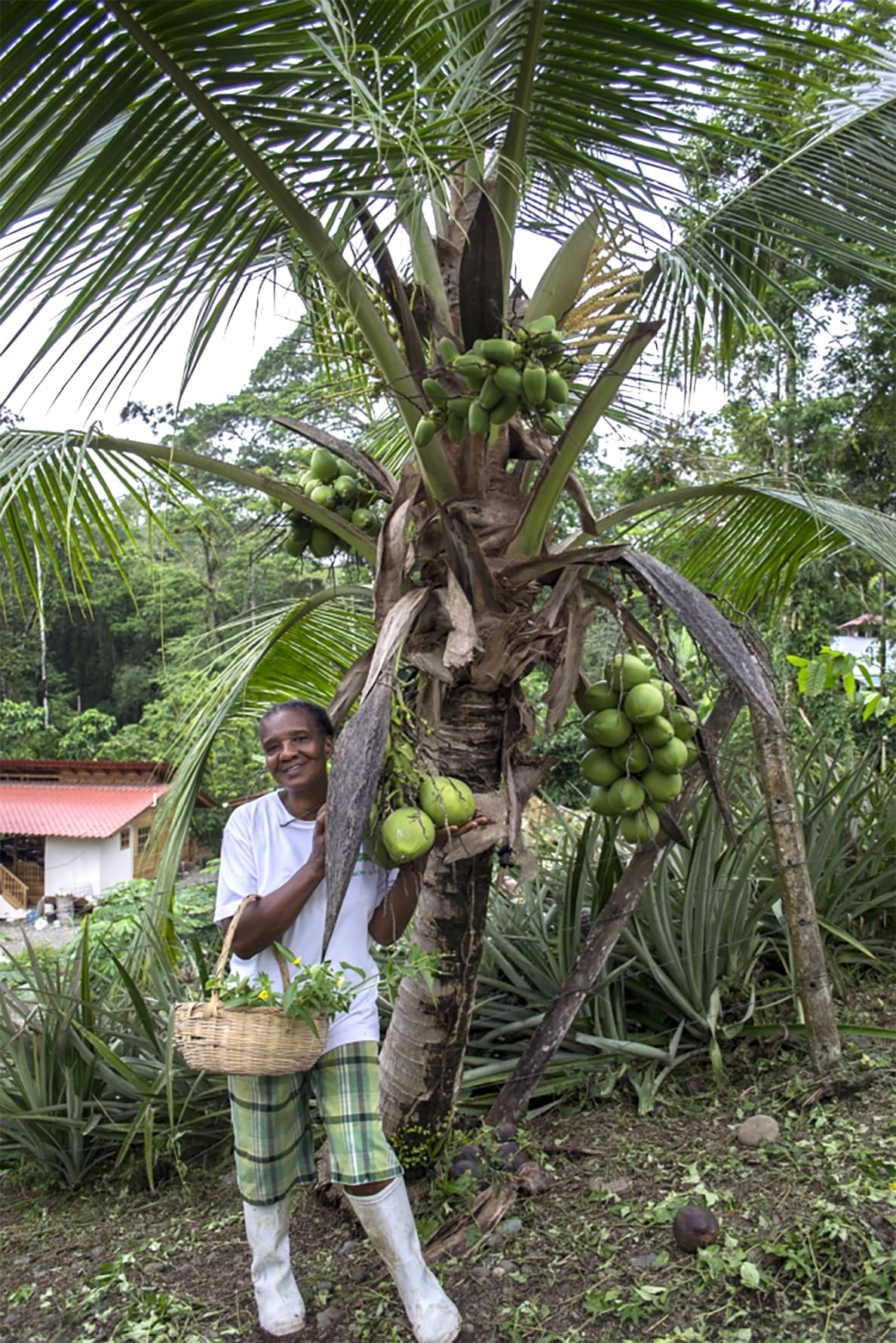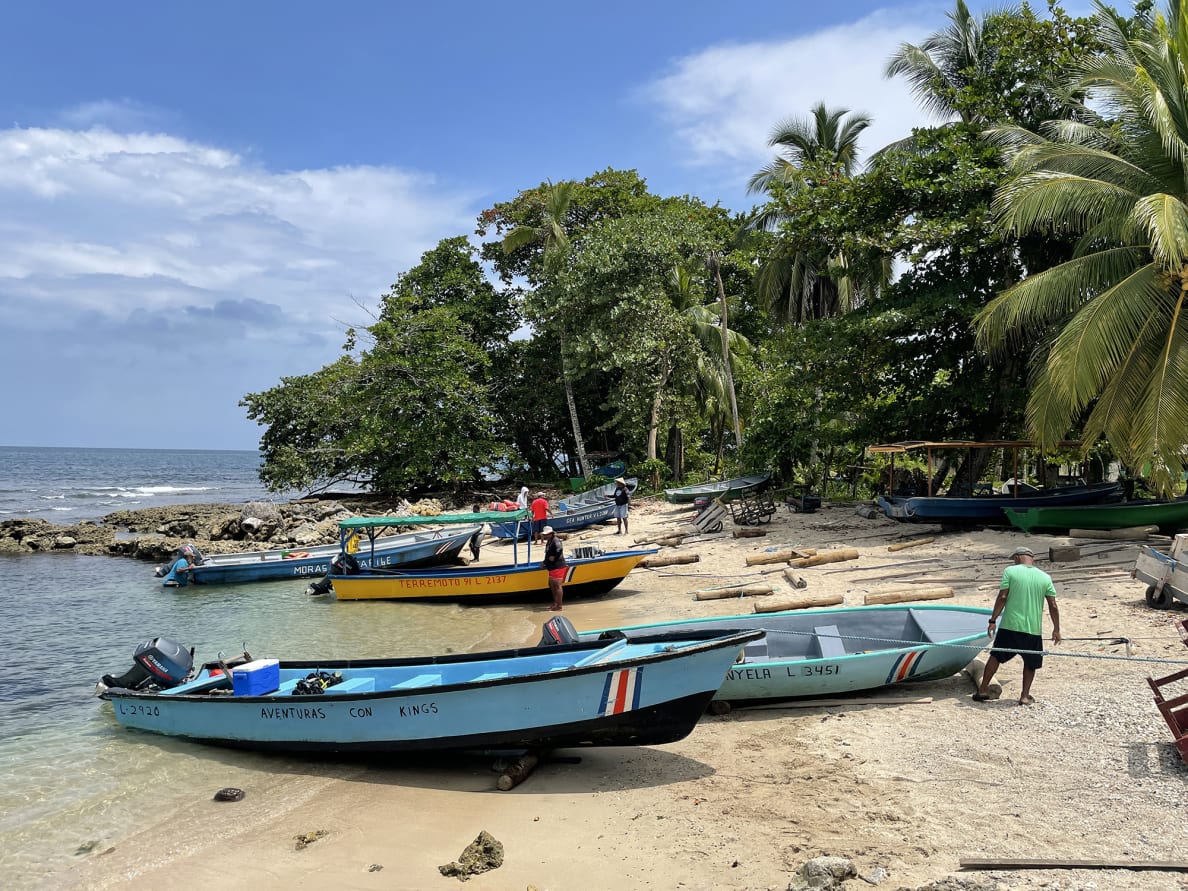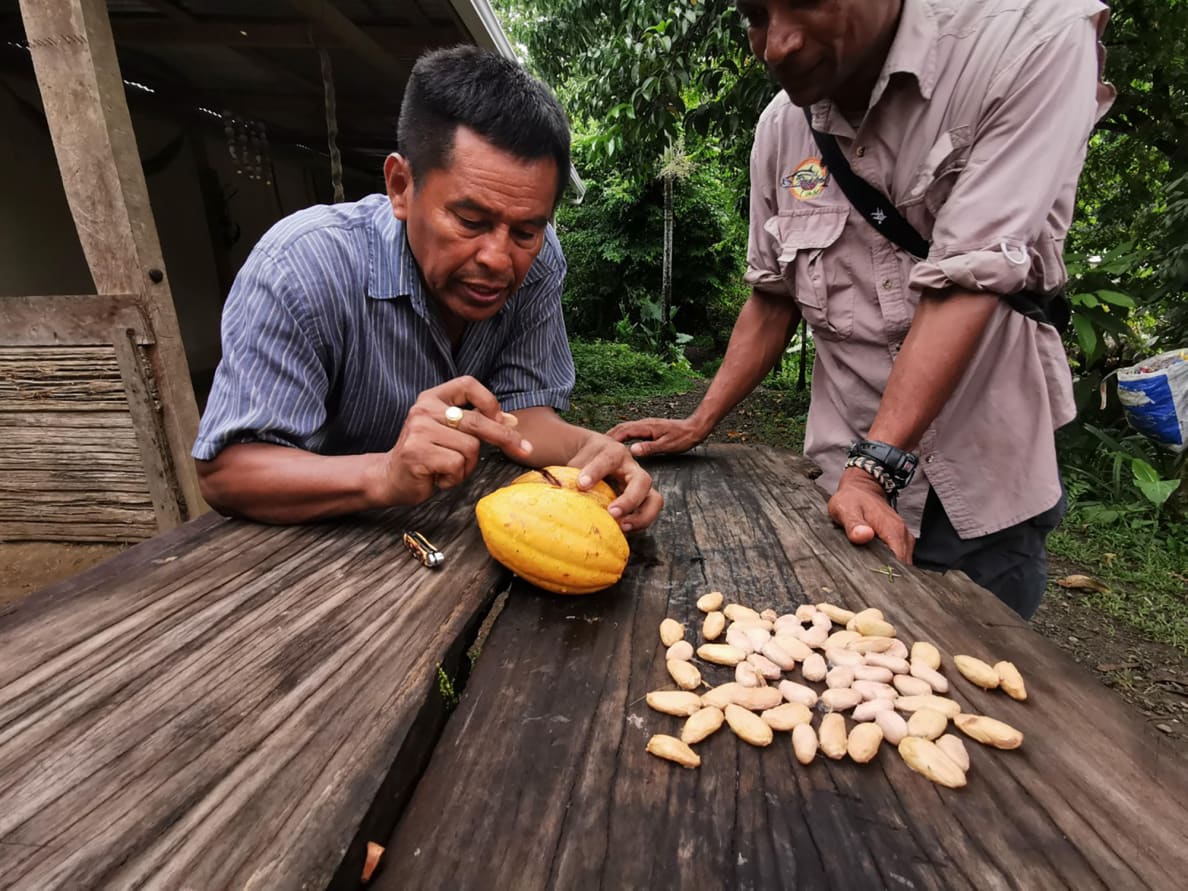Costa Rica is what journey goals are product of. You may hike alongside effervescent volcanic mud pits with monkeys prowling overhead, watch courageous surfers elegantly navigate towering waves whereas mendacity underneath coconut palm bushes, or hug 200-year-old Ceiba bushes in the course of a mountain forest. The nation is visually gorgeous, making it a social media darling particularly throughout quarantine. It additionally attracts vacationers who’re searching for adventures like ziplining and white water rafting, or these searching for bodily and non secular therapeutic actions like yoga or plant medication. Even with tourism charges down in Costa Rica due to the pandemic, it grew to become a very common journey vacation spot for a lot of North Individuals to get out of their houses and inundate themselves in nature.
Nevertheless this tourism romance between Costa Rica and North America is just not new. Within the final 30 years, it emerged right into a hotspot particularly for vacationers and expats from america and Canada. Eighty p.c of journey is said to ecotourism and the theme is ever-present within the nation’s worldwide advertising. Whereas the Pacific coast continues to be essentially the most visited, these searching for extra taste have been discovering the southern Caribbean coast, significantly the county (“canton”) of Talamanca. It’s distinctive in that it’s house to the indigenous Bribri group and the Afro-descendant Costa Ricans, and it was the one a part of Costa Rica that was not colonized by the Spaniards. Talamanca consists of Puerto Viejo, Cahuita (recognized for its lush nationwide park), Manzanillo, and the Kéköldii indigenous territory amongst different coastal and mountain communities. Eighty-eight p.c of Talamanca is protected land due to its biodiversity, and additionally it is essentially the most culturally numerous. It boasts a distinctly Caribbean really feel, from the omnipresence of reggae and rice and beans to the interconnectivity of the locals with nature.
Frankly, for many years, folks didn’t need to go to Talamanca due to racism. Home and worldwide vacationers believed it was harmful as a result of it’s the place the Black folks stay. Whereas this isn’t distinctive to Costa Rica, it’s baked into the nation’s historical past. The Costa Rican authorities had insurance policies courting again to the 1860s barring sure nationalities and ethnicities from getting into the nation (i.e. folks of African or Chinese language descent). After they allowed Jamaicans emigrate to assist construct the railroads within the late 1800s, they have been basically banned from shifting to different elements of the nation when the venture was completed 20 years later. The Afro Costa Ricans (Afrodescendientes) constructed up Puerto Viejo which was initially swamp land.
On the identical time within the early to mid-1900s, Talamanca was (and nonetheless is) additionally best for rising cacao, Costa Rica’s most important money crop on the time. However for indigenous and Afro-descendant communities, it was greater than a cash maker. It’s a non secular plant and in addition extremely wholesome, filled with antioxidants and anti inflammatory advantages. When a fungus utterly destroyed all the cacao crops within the late Nineteen Seventies, it additionally tanked the financial system. Jobs disappeared and the younger individuals who might flocked to town for brand spanking new alternatives, or went into development. The United Fruit Firm took over many of those farms, creating large banana plantations, utilizing pesticides that vastly affected group well being and eliminating lots of the native non secular crops.
Beast Journey Digest
Get your complete world in your inbox.
In the meantime tourism was rising right into a multimillion-dollar world business, and surfers began to flock to Puerto Viejo to trip the distinctive “Salsa Brava” waves which might solely be skilled within the small coastal city. Noticing the cultural and environmental adjustments exacerbated by tourism, involved locals got here collectively within the late Nineteen Eighties to create ATEC, Asociación Talamanqueña de Ecoturismo y Conservación. The multicultural group noticed what was occurring in locations like Mexico and questioned in the event that they as a group might direct the kind of tourism they wished whereas preserving the land and the tradition. ATEC formally grew to become a non-profit group in 1990 specializing in supporting locals to earn cash by excursions together with conservation efforts across the area. They pioneered ecotourism in Talamanca.

Veronica’s Place has develop into a “should go to” in Puerto Viejo.
Courtesy ATEC
“We consider ‘compatir en tal vez de competitir,’” affirmed Waltraud Bethel, recognized domestically as Kiana, certainly one of ATEC’s unique co-founders. The phrase interprets to “share as a substitute of compete.” Kiana was one of many first foreigners to go to and keep in Puerto Viejo whereas touring all through Central America 40 years in the past. Quickly after she arrived, she related with a neighborhood indigenous man named Mauricio and discovered farming, harvesting, recognizing animal tracks, plant medication and extra about native indigenous traditions.
“Everybody was on horseback and the farm was the grocery store!” she remembers. She noticed tourism changing into a sustainable financial different as extra European vacationers began to go to and helped Mauricio create cultural tour alternatives at his farm to share his data of the land, changing into the primary information within the space. Kiana knew the mindset of the backpackers who have been visiting—they wished to know extra concerning the issues he thought-about fundamental elements of life. It grew to become a method of intercultural change; Mauricio was simply as curious concerning the vacationers and their lifestyle. Kiana shared that some locals thought his success was as a result of he was with a overseas lady, however she and Mauricio helped different native farmers to bundle their data for worldwide guests. Along with native Afro-descendant households and artisans, ATEC grew to become a group useful resource in Puerto Viejo and all of Talamanca. Though they misplaced their brick and mortar house on the principle highway as a result of pandemic, ATEC is now a authorities acknowledged “cultural institute.” They serve vacationers and vacationers who need to e book excursions via their website, and proceed to be lively on the native, regional and countrywide ranges.

Kiana will inform you fairly clearly that ATEC is just not a tour firm, it’s a nonprofit group. “ATEC is a platform for native guides to have higher revenue.” She shares with satisfaction that their earlier workplace was the world’s first “web cafe” (keep in mind these?) and that “we have been the publish workplace earlier than there was a publish workplace.” Whereas their general focus is the preservation of the land and tradition, the inspiration of ATEC is guaranteeing native tour guides are paid pretty for his or her time, work, and data. ATEC guides are specialists on birds, animals, medicinal crops and the ocean. Not like lots of the varied tour firms working round Puerto Viejo, ATEC solely works with guides who’re licensed and licensed by the federal government, and helps people by the lengthy and expensive course of to get licensed. Many journey businesses are primarily based within the capital, San Jose, and can cost inflated costs to vacationers for excursions by unlicensed guides who solely earn a small proportion. It’s each grasping and harmful contemplating that lots of the excursions embrace slippery hikes to waterfalls or snorkeling within the typically tough Caribbean sea. As an alternative ATEC works as an middleman so vacationers pay the guides immediately. Moreover, guests get to expertise Talamanca through native indigenous and Afro-descendant individuals who know the land intimately. Carlos, a information who’s labored with ATEC for years, shared how vital ATEC is for guides to make a strong residing from their work. “ATEC pays very pretty to the tour guides, they’re not making an attempt to tear us off like a lot of the firms,” he defined. “They (journey businesses) make the product additional costly however they don’t need to pay the guides effectively,”
Along with supporting the native financial system, ATEC has been on the forefront of the conservation motion. “We all know tourism is up and down, we all know it’s one thing that may go away,” Kiana admitted. “We wish a sustainable financial system not less than for Talamanca on a regional stage.” She shared that Talamanca is seen because the “rebellious child” of the nation due to the highly effective actions towards builders that come out of this area. Native activists have efficiently fought off proposed oil drilling and marina initiatives during the last 40 years that might have utterly destroyed the shoreline and the communities residing there.

“Talamanca is at all times resisting. We have been by no means conquered by the Spanish,” mentioned the newly named govt director, Lauren Mora Rodriquez, who bought concerned with ATEC as an activist. She first visited Talamanca as a teen working with indigenous youth round sexual and reproductive well being and intrafamilial violence. As a younger grownup she moved to San Jose for college and located a strong company job after commencement. 4 years in the past, whereas recovering from a moto accident, she remembered her time in Talamanca and felt known as to come back again to reconnect with the therapeutic energy of nature and the indigenous communities. Lauren ended up again in Puerto Viejo volunteering with ATEC and utilizing her training and work expertise with authorities and company contracts to assist native advocates combat extractive builders. Now she is the manager director serving to to solidify the group as they develop alongside the native tourism business and overseas improvement.
At present, they’re nonetheless grounded of their mission to help conservation and cultural ecotourism initiatives. ATEC has been part of launching an iguana reserve which opens in December, constructing a Bribri cultural faculty to protect the language and tradition for future generations, and serving to design the proposed pedestrian zone within the middle of Puerto Viejo to get rid of visitors. Amidst all of this exercise, vacationers, educators, documentarians and others from around the globe contact ATEC on daily basis to e book excursions or get historic or scientific details about Talamanca. ATEC continues to stay out their unique mission, interesting to vacationers who need to deeply join with the distinctive mixture of cultures and the land’s unequivocal pure magnificence.
As extra North Individuals put Talamanca on their journey bucket checklist, Kiana and Lauren hope that they’ll disconnect from the overconsumption and hustle mentality as soon as they arrive. “I would like guests to convey again in your thoughts—like baggage—the values that you simply discovered about right here and what connects us as folks all around the world,” Kiana affords. She additionally needs of us to ask themselves what they’ll do again to their nation to assist protect this area, for instance shopping for natural bananas. Lauren encourages vacationers to come back to attach with nature’s therapeutic power and the individuals who love the land. She feels compassion for folks residing within the “concrete actuality.”
“They really feel everyday perhaps drained, perhaps alone, perhaps they really feel heavy, perhaps they ask ‘What’s my life and what do I must do?’ Each human is aware of there’s one thing extra,” she mentioned with a glance of deep concern and care. “The rivers, flowers, birds, nature is asking… Don’t resist.”


